
Masonry Society Journal
Scope & Guideline
Empowering professionals with essential masonry insights.
Introduction
Aims and Scopes
- Masonry Materials and Mix Design:
Research on the properties and performance of various masonry materials, including lightweight and high-strength grouts, with a focus on optimizing mix designs to enhance structural integrity and sustainability. - Structural Analysis and Modeling:
Development and application of analytical models to evaluate the performance of masonry structures under various loading conditions, including seismic, wind, and fire impacts. - Seismic Performance and Retrofit Techniques:
Investigation into the seismic behavior of masonry structures and innovative retrofit methods to improve resilience and safety in earthquake-prone areas. - Historical Masonry Preservation:
Studies focused on the restoration and preservation of historic masonry structures, emphasizing cost-effective practices and techniques to maintain architectural heritage. - Sustainability in Masonry:
Evaluation of sustainable practices in masonry construction, including the use of earth-based materials and the lifecycle assessment of masonry systems.
Trending and Emerging
- Advanced Predictive Modeling Techniques:
The use of artificial intelligence, such as neural networks, to predict masonry performance is on the rise, showcasing an integration of computational techniques to enhance predictive accuracy in masonry design. - Innovative Seismic Retrofit Solutions:
There is a growing interest in novel retrofit techniques for masonry structures, particularly those that address seismic vulnerabilities, indicating a proactive approach to improving structural resilience. - Sustainability and Environmental Impact Assessment:
Research focusing on the sustainability of masonry materials and construction practices is increasingly prevalent, reflecting a broader societal demand for environmentally responsible building methods. - Integration of Modern Materials in Masonry:
The exploration of high-strength materials and their implications in masonry applications is emerging as a key area of study, indicating a trend towards enhancing the performance of traditional masonry systems.
Declining or Waning
- Traditional Masonry Techniques:
Research centered on conventional masonry construction methods seems to be decreasing, potentially indicating a shift towards more innovative and modern approaches that incorporate technology. - Basic Fire Resistance Studies:
While fire resistance remains important, the frequency of basic studies on fire impact on masonry materials is declining, suggesting a movement towards more application-oriented research and comprehensive reviews. - Generalized Structural Behavior Assessments:
There is a noticeable reduction in broad assessments of masonry behavior without specific application or context, highlighting a trend towards more targeted and nuanced investigations.
Similar Journals
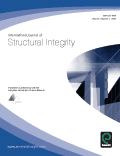
International Journal of Structural Integrity
Elevating Knowledge in Civil and Mechanical EngineeringInternational Journal of Structural Integrity is a premier peer-reviewed academic journal published by EMERALD GROUP PUBLISHING LTD in the United Kingdom. As a valuable resource in the fields of Civil and Structural Engineering, Mechanical Engineering, and Mechanics of Materials, this journal serves to advance knowledge and foster innovation in these critical areas of study. With an impressive impact factor reflected in its 2023 category quartiles, ranking Q2 across multiple engineering disciplines, the journal is recognized for its contributions to research and practical application. Researchers can benefit from its rigorous publishing standards that encompass a wide array of interdisciplinary topics pertaining to structural integrity. Accessing the journal is facilitated for those seeking high-quality research and findings, vital to both academia and industry. Since its inception in 2010 and extending until 2024, the journal continues to attract scholarly articles that push the boundaries of engineering knowledge, making it an essential platform for professionals, students, and researchers seeking to stay at the forefront of structural engineering."
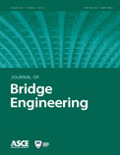
Journal of Bridge Engineering
Elevating Standards in Civil and Structural EngineeringThe Journal of Bridge Engineering, published by the ASCE - American Society of Civil Engineers, is a premier academic journal dedicated to the specialized field of bridge engineering and structural design. With a strong commitment to advancing knowledge from 1996 to 2024, this journal is recognized for its excellence, holding a prestigious Q1 ranking in both the Building and Construction and Civil and Structural Engineering categories according to the latest 2023 metrics. The journal's ISSN 1084-0702 and E-ISSN 1943-5592 signify its commitment to scholarly communication in a digital age. While it does not currently follow an open access model, the Journal of Bridge Engineering significantly impacts the engineering community, appealing to researchers, professionals, and students who seek cutting-edge research and innovative practices in bridge engineering. Its current rankings on Scopus place it among the top journals in its field, reinforcing its role as a critical resource for advancing the state of the art in bridge design, maintenance, and sustainability.
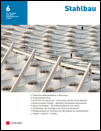
Stahlbau
Pioneering Research for Sustainable Building Solutions.Stahlbau is a prestigious journal published by ERNST & SOHN, focusing on the intersection of materials science, civil engineering, and mechanical engineering. With its roots dating back to 1968 and extensive coverage through 2024, this journal serves as a vital platform for the dissemination of innovative research and insights in the fields of Building and Construction, Civil and Structural Engineering, and Advances in Metals and Alloys. Despite its categorization in the Q3 quartile across several disciplines, it is recognized for its rigorous peer-reviewed articles and its commitment to advancing knowledge in structural engineering and materials' performance. The journal aims to foster a dynamic dialogue among researchers, industry professionals, and students, making it an essential resource for anyone looking to stay at the forefront of developments in construction and materials engineering. Access options reflect a commitment to intellectual exchange in academia, emphasizing the journal's role as a cornerstone for emerging research and best practices.

Journal of Structural Integrity and Maintenance
Elevating Standards in Structural Engineering ResearchThe Journal of Structural Integrity and Maintenance, published by Taylor & Francis Ltd, serves as a prestigious platform dedicated to the advancement of knowledge in the fields of structural integrity, civil engineering, and materials science. With an ISSN of 2470-5314 and an E-ISSN of 2470-5322, this journal is uniquely positioned to address the critical challenges faced by researchers and professionals in building and construction, mechanical engineering, and related domains. Since its inception in 2016, this journal has been consistently recognized for its quality, currently holding a Q2 rank across several disciplines, including Building and Construction and Civil and Structural Engineering in 2023. The journal aims to publish high-quality research that contributes to the understanding and maintenance of structural integrity, fostering innovations that promote safety, efficiency, and sustainability in engineering practices. Researchers and students alike are encouraged to engage with this rich repository of knowledge, which plays a vital role in shaping future advancements in structural engineering and materials science.
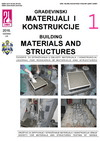
Gradevnski Materijiali I Konstrukcije-Building Materials and Structures
Pioneering sustainable practices in building materials and structures.Gradevnski Materijiali I Konstrukcije - Building Materials and Structures is a premier open-access journal dedicated to advancing the field of construction materials and structural engineering. Published by SOC MATERIALS & STRUCTURES TESTING SERBIA, this journal provides a platform for researchers, professionals, and students to share their innovative findings and developments in building materials. With a commitment to open-access since 2012, it fosters unrestricted availability of research for a wider audience, encouraging collaboration and knowledge dissemination. The journal features a diverse range of topics, including material testing, structural integrity, and sustainable construction practices, making it a vital resource for those engaged in the design and analysis of structural components. By fostering the advancement of research and practice in this crucial sector, Gradevnski Materijiali I Konstrukcije plays an essential role in shaping the future of construction and material science.

Jordan Journal of Civil Engineering
Exploring New Horizons in Civil EngineeringThe Jordan Journal of Civil Engineering, ISSN 1993-0461 and E-ISSN 2225-157X, serves as a pivotal platform for research dissemination in the field of civil engineering. Published by Jordan University of Science & Technology, this journal has established itself as a vital resource since its inception in 2007 and continues to impact the academic community with its wide-ranging scope covering innovative practices and cutting-edge research in civil and structural engineering. Holding a respectable Q3 ranking in the 2023 category, with Scopus positioning it at rank #235 out of 379, the journal reflects growing recognition within its discipline. Although currently not an open-access publication, it provides essential insights that can benefit researchers, industry professionals, and students seeking to contribute to advancements in civil engineering through rigorous scholarly articles and studies up to 2024. Its commitment to high academic standards enhances the relevance and importance of its contributions to both local and global engineering practices.

International Journal of Bridge Engineering
Transforming Infrastructure: Where Engineering Meets SustainabilityThe International Journal of Bridge Engineering, with the ISSN 2241-7443, is a pivotal platform dedicated to advancing the field of bridge engineering. Published by the renowned INT JOURNAL BRIDGE ENGINEERING, this journal aims to disseminate high-quality research and innovative practices that contribute to the design, construction, and maintenance of bridges globally. With a commitment to open access, the journal provides unparalleled accessibility to its articles, ensuring that findings reach a wide audience of researchers, professionals, and students alike. Located in Greece, the journal harnesses a diverse range of interdisciplinary insights, fostering collaboration among civil engineers, architects, and environmental scientists. As an essential resource within the field, the International Journal of Bridge Engineering aims to shape the future of infrastructure by publishing rigorous research and case studies that address current challenges and promote sustainable development in bridge engineering.

Buildings
Transforming Ideas into Structures: Your Gateway to Building ExcellenceBuildings is a premier peer-reviewed journal published by MDPI, focusing on the multidisciplinary aspects of architectural and civil engineering. Established in 2011, this Open Access journal has quickly gained recognition in the academic community and is currently classified in the Q1 category for Architecture and Q2 for Building and Construction, as well as Civil and Structural Engineering, reflecting its significant impact within these fields. With Scopus rankings placing it in the top tier of architecture and construction disciplines, Buildings provides a platform for innovative research and practical applications that push the boundaries of knowledge in building design, sustainability, and infrastructure development. The journal, based in Switzerland and intended for an international audience, welcomes various types of content including research articles, reviews, and case studies, ensuring a comprehensive resource for researchers, professionals, and students alike.

Electronic Journal of Structural Engineering
Exploring Open Access Solutions in Structural EngineeringThe Electronic Journal of Structural Engineering (ISSN: 1443-9255), published by EJSE INT LTD, serves as a vital platform for disseminating innovative research and developments in the field of structural engineering. Since its inception in 2001, the journal has evolved to embrace an Open Access model starting in 2022, ensuring that cutting-edge findings are freely accessible to researchers, professionals, and students worldwide. Housed within the reputable Department of Infrastructure Engineering at the University of Melbourne, Australia, the journal focuses on a wide range of topics related to civil and structural engineering, positioning itself within the Q4 category on the 2023 Scopus rankings. While its H-index and detailed scope data are currently unavailable, the journal's commitment to quality research is evident through its continuous publication and engagement with the global academic community. With significant implications for contemporary engineering practices, The Electronic Journal of Structural Engineering not only fosters scholarly discourse but also encourages practical applications of structural engineering advancements.
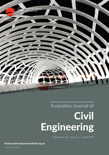
Australian Journal of Civil Engineering
Advancing the Future of Civil EngineeringThe Australian Journal of Civil Engineering, published by Taylor & Francis Ltd, stands as a pivotal platform within the field of civil and structural engineering. With an ISSN of 1448-8353 and an E-ISSN of 2204-2245, this journal consistently delivers high-quality research and innovative practices from both established and emerging scholars in the discipline. Recognized in the Q2 category for Civil and Structural Engineering in 2023, it holds a respectable position, ranking 146 out of 379 within its field according to Scopus, which places it in the 61st percentile. Converging valuable insights from 2011 through 2024, the journal encompasses a broad scope of topics, including sustainable infrastructure, innovative materials, and advanced construction techniques, thereby addressing contemporary challenges faced by engineering professionals. Though it is a traditional publication without open access options, the quality of the research featured ensures that it remains an essential resource for academics, practitioners, and students striving to enhance their knowledge and contribute to the dynamic field of civil engineering.